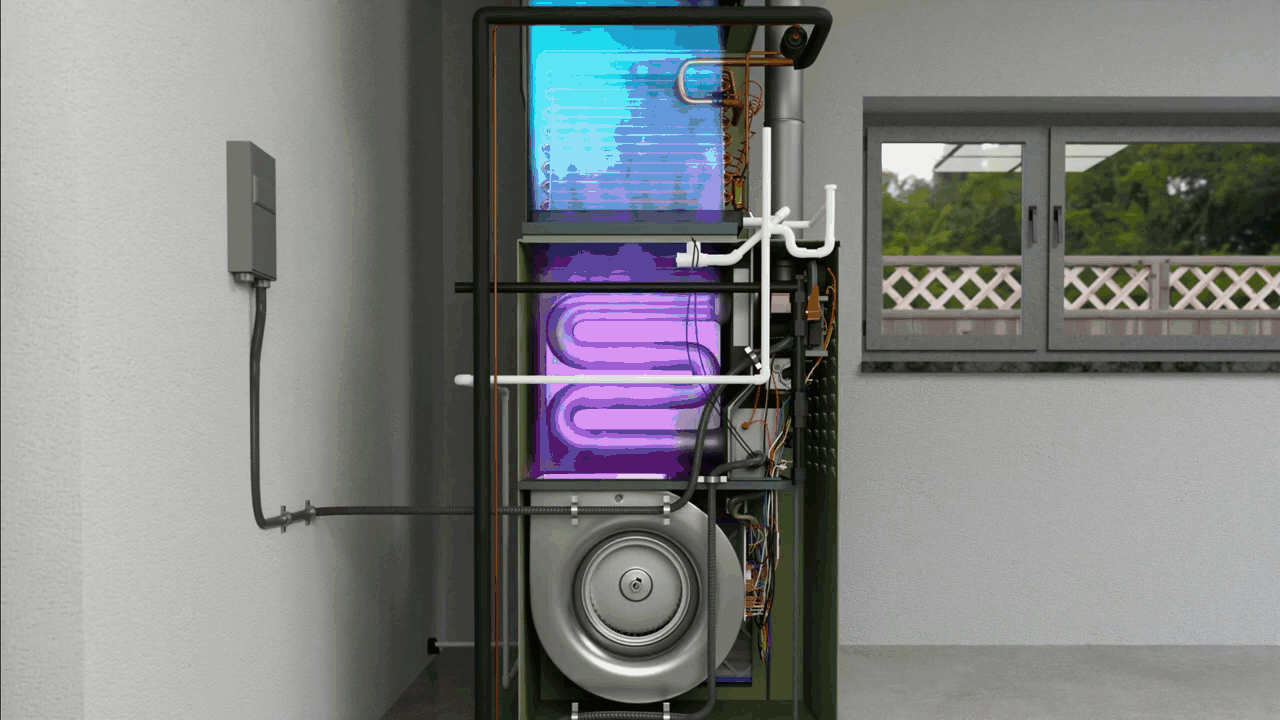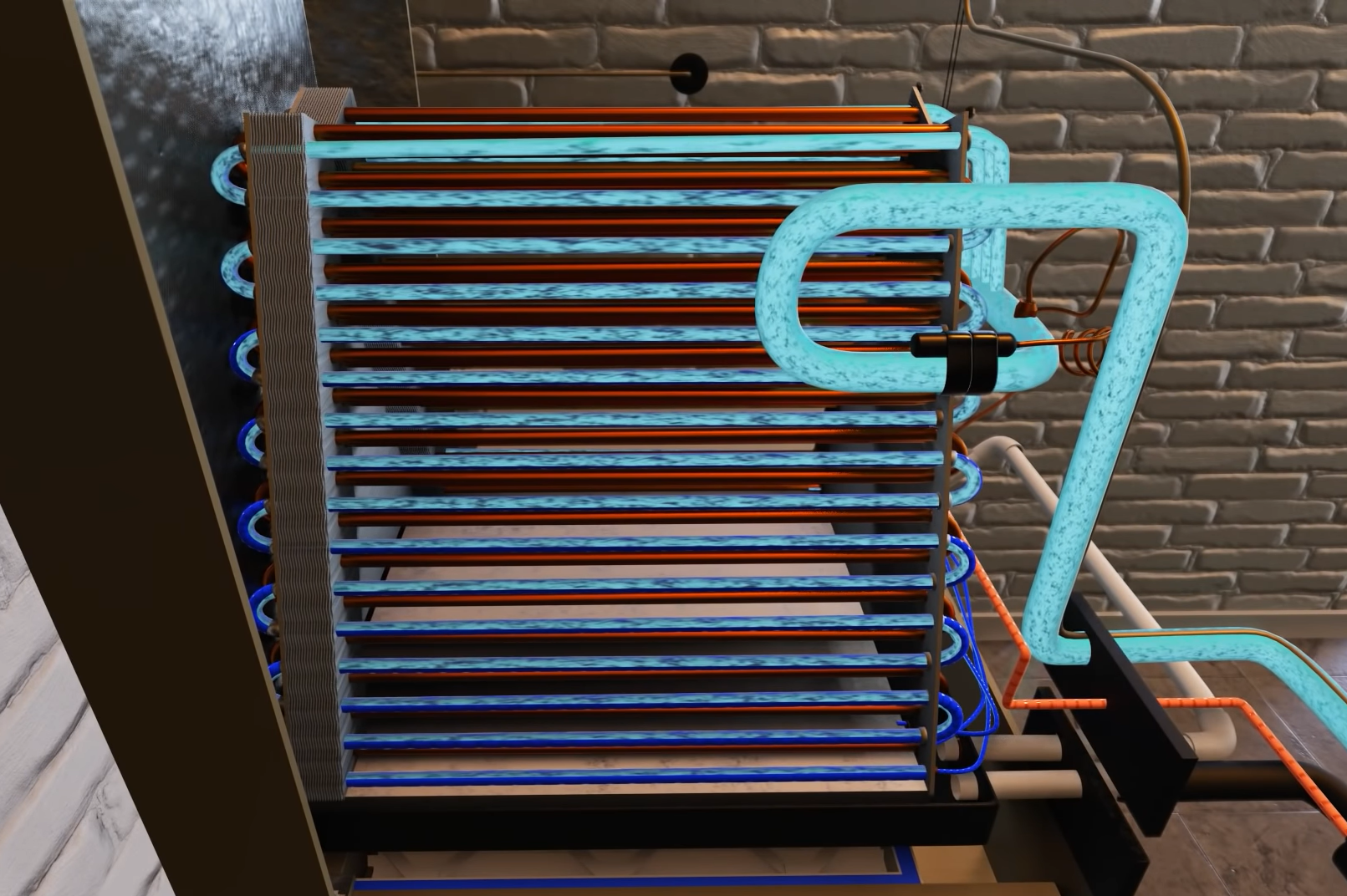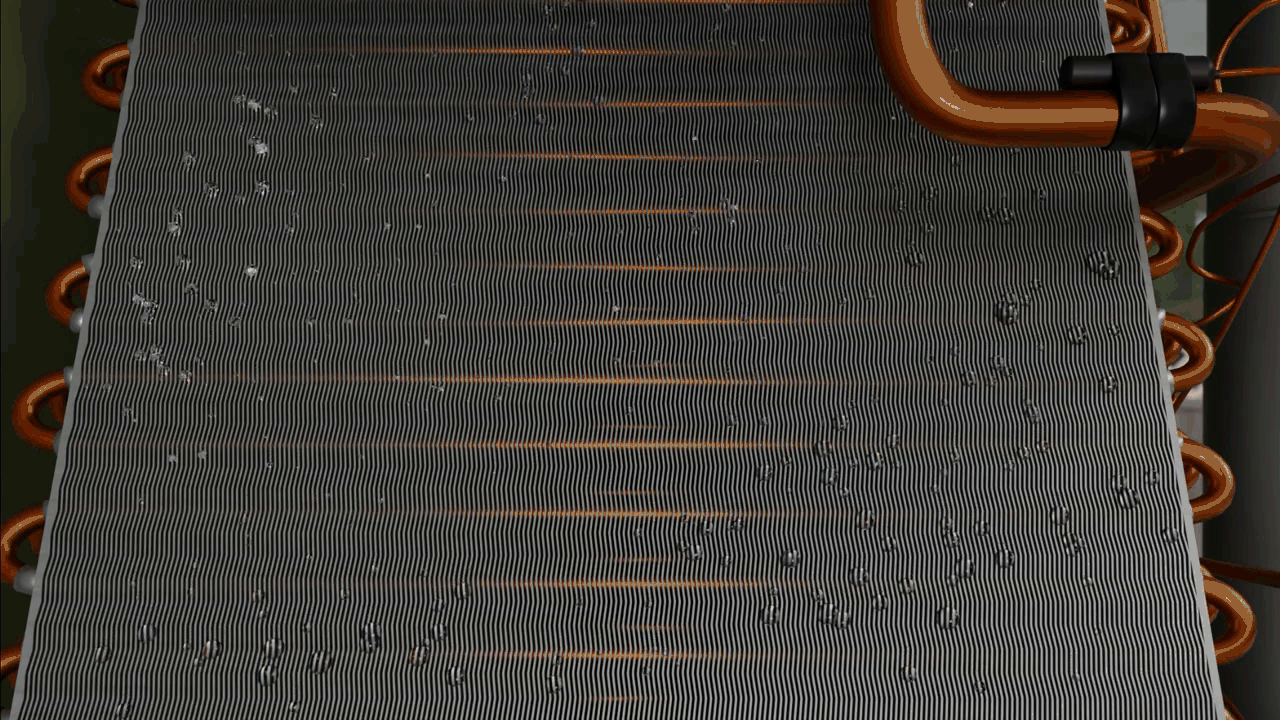Get Tech Tips
Subscribe to free tech tips.
Impacts of Decreasing Evaporator Airflow

Airflow, airflow, airflow…
When we set up and commission comfort cooling and heating systems, we need to pay more attention to airflow before worrying about the fancy controls or the refrigerant circuit. One way to do that is by checking out Bill Spohn's Airflow 101 webinar on ESCO Group's learning network, which you can access for free HERE.
But we can also do a thought exercise. Let's consider a typical 2-ton, straight cool, TXV residential system and think through what happens when we alter airflow and how that impacts the system.
Rather than talk in terms of advanced psychrometric math, we will keep the math to a minimum and focus on “if this, then that” relationships between airflow and system function.
Mass vs. Volume
First, let's establish that it is the molecules or “stuff” that makes up air that contains and can move heat energy. While we often talk in terms of CFM (cubic feet per minute), that is a measurement of volume rather than mass. The air conditioner cares about the mass flow of air over the coil, not the volume flow, which is why more airflow in CFM is required in high altitudes where the air density is lower.
In other words…
Mass flow is what matters and when air gets less dense; we need more air volume to move the same amount of heat.
So, when we speak in terms of CFM/ton (cubic feet of air per ton of cooling), that refers to typical air at sea level and needs to be adjusted as air density changes. (Jim Bergmann taught a helpful class on the topic; you can watch that video HERE.)
400 CFM/Ton
The 400 CFM/ton design has been used for years. It is an adequate baseline airflow for many types of equipment and in many moderate climate zones. However, there are several issues with the 400 CFM/ton rule. Here are a few examples of where it needs to be adjusted:
- In higher altitudes, the air is less dense; therefore, more air is required to maintain the same mass flow rate over the coil.
- The nominal or listed tonnage on a piece of equipment is often NOT what the equipment produces at current load conditions. A 2-ton system that is designed for AHRI conditions (95° outdoor and 80° indoor return temperature) could easily produce under 20K BTU/hr at 73° indoor and 97° outdoor temperatures, your CFM/ton will be much different than intended. In this case you will be running a higher CFM/ton due to the reduced capacity at load conditions.
- Areas with higher latent (humidity) load will run lower than 400 CFM/ton on purpose to remove more moisture from the air, and areas with arid (dry) climates will often run higher than 400 CFM/ton to remove less or no moisture from the air.
How The Evaporator “Absorbs” Heat

In my refrigeration circuit basics training, I call the evaporator coil the “heat absorber” because its end goal is to take heat from where you don't want it and move it somewhere else.
The heat gained in the evaporator in this scenario comes from the indoor air being moved over the evaporator coil. The air is warmer than the refrigerant, so heat leaves the air as it impacts the tubing and fins of the coil because “hot goes to cold.”
The heat is transferred from the air through the walls of the copper tubing and into the refrigerant via conduction. In contrast, the heat is transferred through the air and refrigerant via convection because they are both dynamic (moving) fluids.
The air temperature is decreased because heat is removed from the air and moves into the refrigerant. The refrigerant in the evaporator coil is at saturation (boiling); the coil temperature doesn't directly change as heat is added to the refrigerant, but it begins to increase indirectly. As the total heat energy in the evaporator increases, so does the coil pressure, and vice versa. This is similar to the pressure cooker effect: as the water boils in the pressure cooker, the pressure increases, and so does the boiling temperature of the water.
When the coil's temperature is below the dewpoint of the air moving over it, there is also a transfer of latent energy from the air as some of the water vapor in the air condenses to liquid water (condensate) on the evaporator coil. This latent heat transfer does not result in colder air but rather a lower moisture content in the air. This heat impacts the evaporator in the same way as sensible heat as it is added to the total heat picked up in the evaporator.

Evaporator Coil TD
We use the term “coil TD” a bit differently in different parts of the industry. In air conditioning, it refers to the difference between the air temperature of the return air entering the evaporator coil and the saturated suction temperature, often called the “coil temperature.” In typical 400 CFM/ton applications, this difference will be around 20°, with a higher number meaning a colder coil and a lower number meaning a warmer coil. Several things can impact coil TD, including refrigerant mass flow rate (how much refrigerant the compressor is moving), metering device performance, return air dew point (moisture content), and, most commonly, airflow.
What Happens When Airflow is Decreased?

In this theoretical system, when the airflow is decreased and all else stays the same, the following things will occur:
- Mass airflow will decrease, meaning fewer molecules are moving across the coil.
- Air velocity will decrease, meaning the air is moving over the fins and tubing more slowly.
- The bypass factor decreases; more air molecules will be touching the metal as a ratio.
- Air temperature decreases (to a point) due to the air moving more slowly across the coil with less bypass factor.
- Coil temperature decreases because less overall heat is being picked from the air.
- Coil drops further below the dewpoint, causing more moisture to be removed from the air, increasing dehumidification.
- Suction pressure decreases because less heat energy being picked up means less pressure, and as the superheat falls, the TXV also further throttles the flow of refrigerant through the coil.
- The compression ratio increases as the suction pressure drops, meaning the compressor moves less refrigerant as the refrigerant density entering the compressor falls.
- Coil TD increases as indicated by the colder coil in relation to the return air.
We all know that if you have far too little airflow, a system can freeze up when the coil temperature drops below 32°F. The other consequence of dropping airflow is lower overall sensible capacity and, therefore, a drop in the efficiency rating. (That's EER2 or SEER2; for more information about SEER2, check out THIS tech tip or ESCO HVAC Show's NATE-eligible course about SEER2.) On the positive side, a system with lower airflow will remove more water from the air in humid climates, which can be desirable.
Sometimes need more airflow, and sometimes you need less. But no matter what, changing airflow changes a lot about how the system operates and should be done carefully and thoughtfully.
—Bryan











Comments
Thanks for your informative newsletter. In the above situation with restricted airflow wouldn’t the temperature in the house go up? I didn’t see any mention of that part. Recently I had some friends who called me at night about their AC that was making their house too cool and they thought it might have been from a frozen evaporator coil. The unit also wouldn’t shut off. I was out of town and couldn’t get over there but told them it should be hot in the house if the coil was frozen over I thought, since the airflow would be zero if it was totally frozen. They tripped the breaker for the rest of the night and when it was turned back on the next day it they said it seemed to be working fine. Maybe it was partially frozen? I would like to see your comment on this in a future episode if you judge it to be tech-worthy. Thanks.
Thanks for your informative newsletter. In the above situation with restricted airflow wouldn’t the temperature in the house go up? I didn’t see any mention of that part. Recently I had some friends who called me at night about their AC that was making their house too cool and they thought it might have been from a frozen evaporator coil. The unit also wouldn’t shut off. I was out of town and couldn’t get over there but told them it should be hot in the house if the coil was frozen over I thought, since the airflow would be zero if it was totally frozen. They tripped the breaker for the rest of the night and when it was turned back on the next day it they said it seemed to be working fine. Maybe it was partially frozen? I would like to see your comment on this in a future episode if you judge it to be tech-worthy. Thanks.
In that scenario, my guess is that the contactor on the condenser welded shut. Once that happened, the outside unit will continue running even once the thermostat is satisfied. If the fan was set to “on” then the house would continue to get colder and colder until the return air temperature dropped so low that the coil began to freeze. Or if the blower shut off, the condenser would continue to run with NO airflow and freeze up even faster.
In that scenario, my guess is that the contactor on the condenser welded shut. Once that happened, the outside unit will continue running even once the thermostat is satisfied. If the fan was set to “on” then the house would continue to get colder and colder until the return air temperature dropped so low that the coil began to freeze. Or if the blower shut off, the condenser would continue to run with NO airflow and freeze up even faster.
thanks Bryan, so helpful.
about how compressing ration increase with droping down suction pressure need little more elaboration,
and could you please show us charts for the different type refrigerant how density change in relation to temperature/pressure of refrigerant.
thanks again.
thanks Bryan, so helpful.
about how compressing ration increase with droping down suction pressure need little more elaboration,
and could you please show us charts for the different type refrigerant how density change in relation to temperature/pressure of refrigerant.
thanks again.
To leave a comment, you need to log in.
Log In